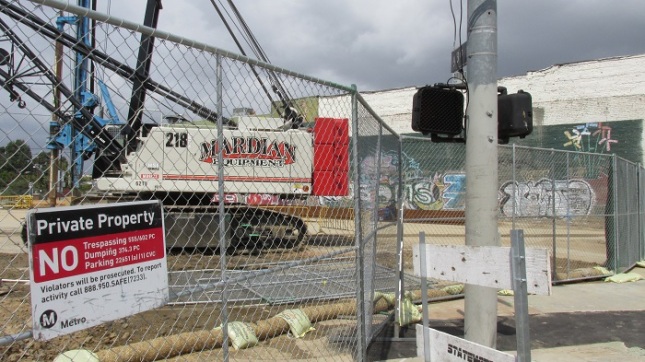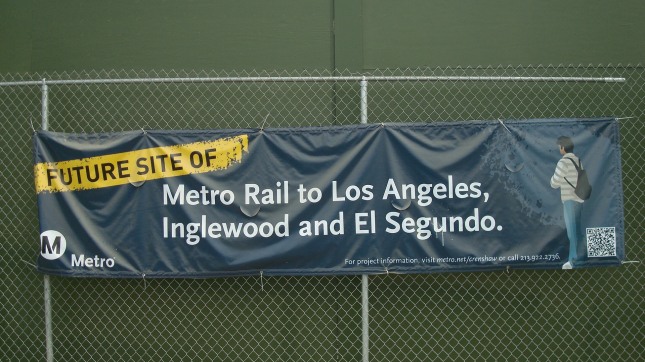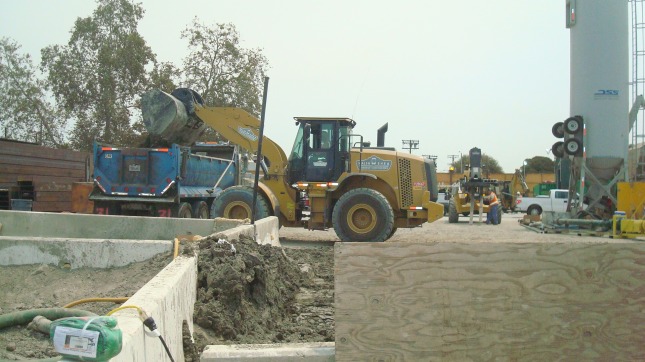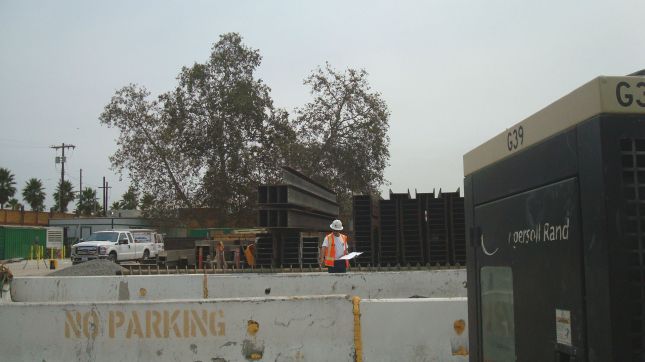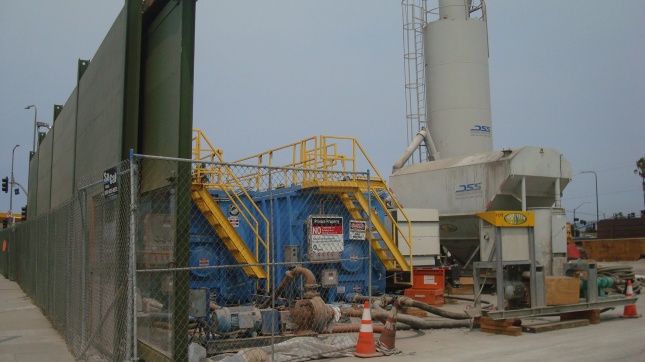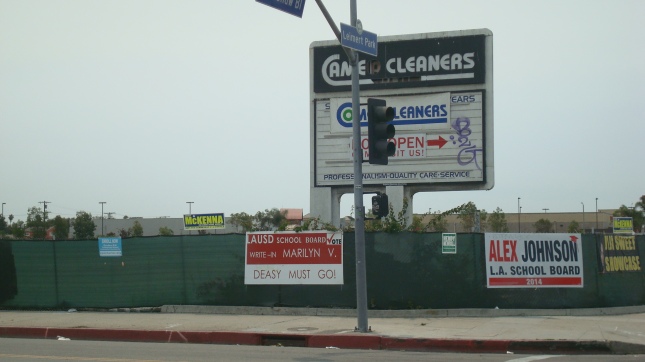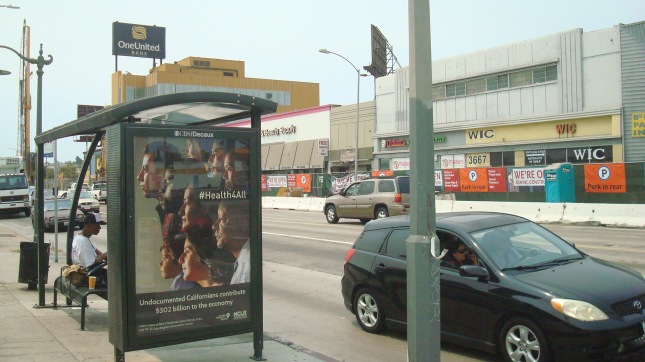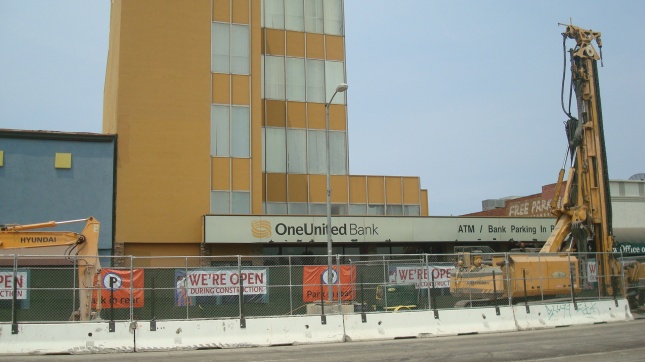It’s hard to even keep track of all the different projects that the MTA is working on throughout the county. New rail lines are being constructed, old ones are being expanded, and improvements are being made to increase safety and ease of use. The photos below represent just some of the projects that are currently under construction.
In Little Tokyo, work is beginning on the Regional Connector. This will be a 1.9-mile underground light-rail system that connects the Gold Line to the 7th Street/Metro Station. It will also make it easier for passengers to transfer to the Red, Purple, Blue and Expo Lines.

First and Central, future site of a stop for the Regional Connector

Material and equipment stored on the site at First and Central
Construction on the Crenshaw/LAX Line started last year. This will be 8.5 miles of light rail running from the Expo Line to the Green Line, with below-grade, at-grade and elevated segments.

Crenshaw/LAX Line construction site at Crenshaw and Exposition

Another shot of the site from Crenshaw and Rodeo
This project could provide a huge boost to businesses along the line, although there are already signs that it could encourage gentrification which may drive long-time residents and business owners out of the area. Click on the link below to see what may be in store for the community once the line is finished.
Plan to Turn BHCP into a 24-Hour Community
There are smaller projects going forward, too. In North Hollywood, a subterranean tunnel will connect the Red Line station to the Orange Line station just across the street. This is a great idea, and hopefully will reduce the number of riders dashing across Lankershim against red lights in order to make a connection.

Construction of subterranean tunnel in North Hollywood

Another shot of construction at the North Hollywood site
The photos below are a few months old, but they show MTA crews working on the Purple Line expansion at Wilshire and Fairfax. By day, traffic flowed through the intersection as usual. But at night, construction crews would show up with barricades, heavy machinery and blinding lights. This project highlights the problems of constructing a major transit line in a dense urban area.

Crews working through the night at Wilshire and Fairfax

Another shot of construction at Wilshire and Fairfax
All this sounds great in theory, but this kind of rapid expansion brings plenty of problems with it. I don’t have a car, so I use public transit almost every day. If you ask a simple question like, “Are you glad that the MTA is expanding its transit network?”, I can give you a simple answer like, “Yes.” But if you ask, “What long-term impacts will this expansion have on the City of LA?”, the answers are much more complicated.
In my mind, the biggest thing to worry about is whether or not we can afford all these projects. The MTA is facing a long-term budget shortfall, which could seriously impact its ability to function. Last year they raised the cost of the day pass and the monthly pass by 40% and 30% respectively. But there are almost certainly more increases to come, and it’s uncertain whether riders will pay the higher prices. Here’s an article that LA Streetsblog published in January of this year. It explains that while last year’s fare increase brought revenue up, it may have brought ridership down. If that trend continues, we’re in deep trouble.
MTA Revenue Up, Ridership Down
The MTA is receiving tons of federal funding for these projects, but those funds depend not just on increasing ridership, but also on increasing the share of operating costs covered by fares. If we see a decrease in ridership and/or revenue, we may not be able to count on the money from the feds.
Some people will point to the fact that the LA City Council just voted for a huge increase in the minimum wage, saying that this will enable low-income riders to afford future fare hikes. I don’t buy it. First, the cost of living in LA is increasing at a phenomenal rate. The amount we spend on housing is skyrocketing, DWP rates could easily double or triple, and food is getting more expensive as the impacts of the drought become more pronounced. A significant rise in the cost of public transit will be just one more blow to the bank accounts of minimum wage workers. And there are thousands of MTA riders who don’t even earn minimum wage. LA is the wage theft capitol of the country. Lots of people who work in the restaurant and garment industries are already being paid below the minimum, not to mention the undocumented workers who will take whatever they can get. Many of these people need public transit to get around, and none of them will earn a nickel more after the minimum wage rises.
I’m not arguing that we shouldn’t extend the reach of public transit, but I do question whether this massive expansion is sustainable. I guess all we can do is wait and see.





























